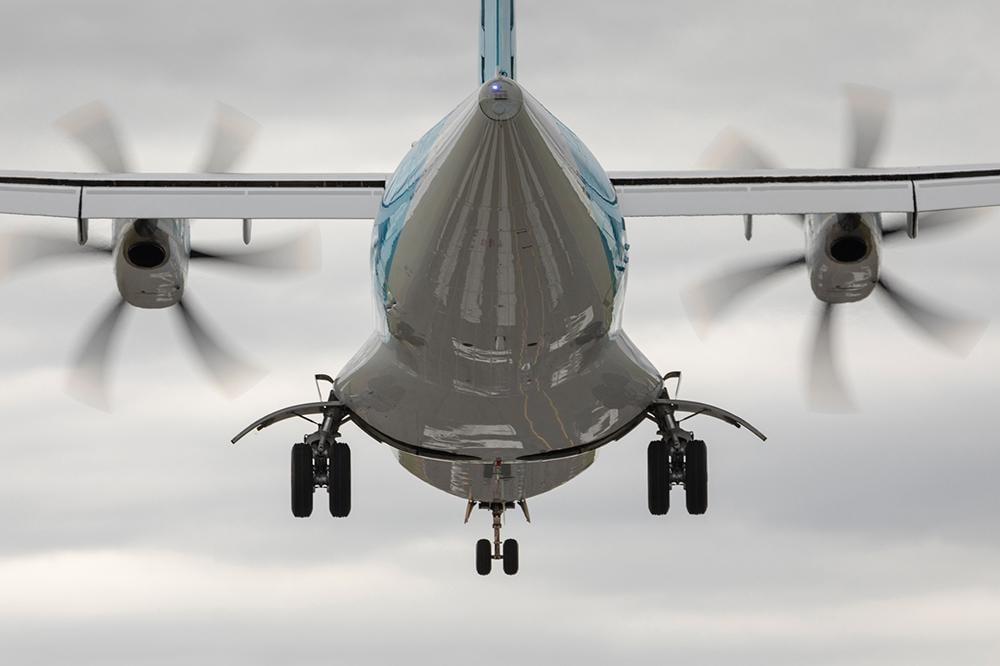
ATR and Safran Landing Systems have collaborated on a new support service that uses machine learning to analyze what type of maintenance is needed following hard landings. Called ‘Smart Lander,’ the landing gear diagnostics service is aimed at boosting availability of aircraft.
According to Vincent de Laborderie, head of ATR Flight Technologies, the companies began working on Smart Lander a few years ago “at a time when the number of hard landings and the complexity of their analysis made it difficult to support our operators’ availability challenges.” He says the service capitalizes on 10 years of hard landing case data accumulated by the global ATR fleet alongside thousands of landing simulations to issue recommendations about what types of maintenance actions are required, depending on the hardness of the landing and the load level sustained by the landing gear.
“In each situation, based on the dynamics of the aircraft (vertical and horizontal speeds at the time the landing gears touch the runway, attitude angles pitch-roll and accelerations, etc.) which are captured by the flight recorders, the effort supported by the landing gear is calculated,” says de Laborderie. This information is then converted from aircraft level to landing gear level, at which point Safran’s expertise about what landing gears can withstand is used to determine whether an aircraft is fit to return to service or needs specific maintenance activities.
According to ATR, this digital process is significantly quicker than previous methods it used to respond to operator hard landing incidents, taking less than an hour to issue recommendations to operators. “Our former process could take up to 10 to 20 working days. It required analyses from both the ATR Design Office and Safran Landing Systems to decide whether the aircraft was fit to return to service,” says David Brigante, ATR senior vice president of customer support and services. “With Smart Lander, we will be able to massively reduce our response times, therefore boosting aircraft availability, reducing costs for customers and enhancing customer satisfaction, while maintaining the same level of analysis quality.”
Smart Lander is still in its early availability stage and being offered as an in-house service by ATR’s engineering teams to deal with operators’ hard landings, but de Laborderie says ATR will evaluate the possibility of making it directly accessible to operators. He adds that ATR will be collecting customer feedback to fine-tune the service and adjust it as necessary.
“We could even imagine embarking Smart Lander on our aircraft to enable our operators to get immediate analyses of their landings,” he says. “But it is too early and having such a tool onboard the aircraft would also have to comply with all the continued airworthiness rules and regulations.”
The companies also claim Smart Lander is the first service of its kind in the aviation industry. “Smart Lander is a true breakthrough in terms of landing load analysis, which will offer real value to ATR operators,” says Patrick Joyez, technical director at Safran Landing Systems.





